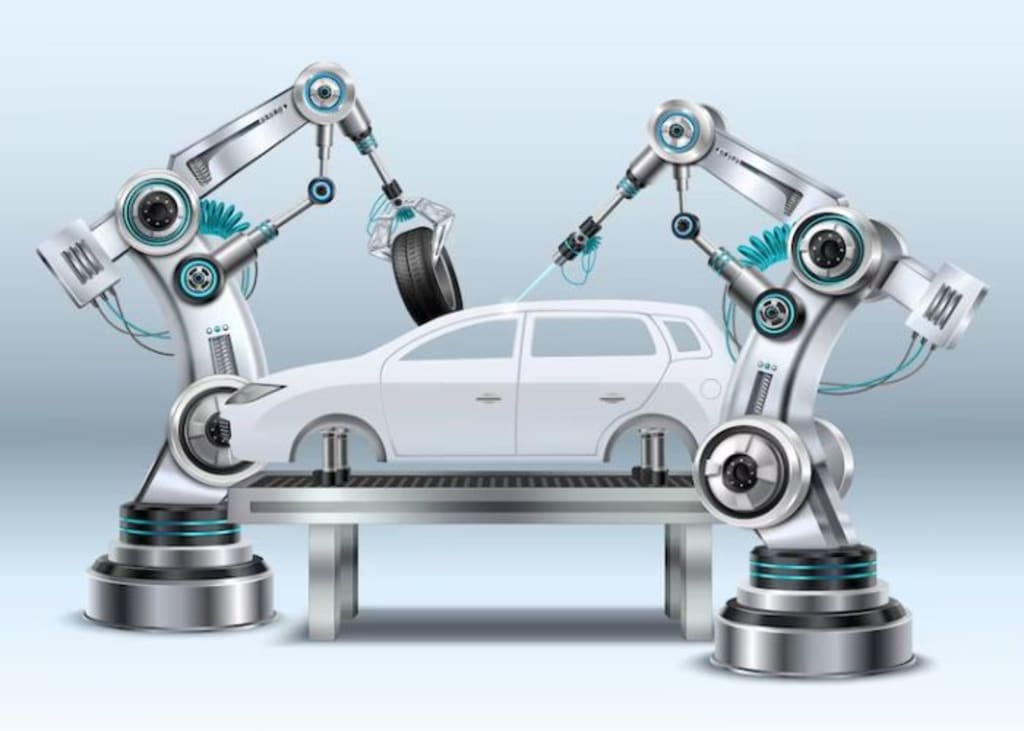
What is Aluminum casting?
Aluminum casting is a method of producing high tolerance and high quality parts that involves pouring molten aluminum into a precisely designed and precision engineered die, mold, or form. It is an effective method for producing complex, intricate, and detailed parts that precisely match the specifications of the original design apart from Aluminium stamping.
The layer of aluminum oxide that forms immediately after the part is removed from the mold provides a wall of protection against corrosion and rust, which is a positive benefit of aluminum cast parts.
The Aluminum Casting Method:
Pouring molten aluminum into a steel mold that has been precision processed to ensure an exceptionally smooth and refined surface is one common method for casting aluminum. This is one of several methods for producing aluminum castings, each of which is used to create automotive parts-
The type of mold, which can be permanently made of steel or temporarily made of a non-metallic material, is a variation in the lost foam casting. Each type of casting has advantages and is relied on for dependability and product quality.
Aluminum Alloys
Aluminum is the third most abundant element on Earth, following oxygen and silicon, with aluminum being the most abundant metal. The difficulty in extracting aluminum from the earth's crust is due to the complex and complicated processes required when compared to extracting iron or other metals.
Bauxite, a sedimentary rock with a 45% to 60% aluminum content, is the metal from which aluminum is extracted. Aluminum was initially difficult to process, making it an expensive and rare metal until the end of the first industrial revolution, when more efficient methods of refining it were invented.
Though aluminum is processed as pure aluminum, it is frequently alloyed with other metals to improve both its own properties and the properties of the metals with which it is alloyed.
Benefits of Aluminum Casting
The widespread use of aluminum casting demonstrates its numerous advantages. Engineers turn to aluminum and its alloys when developing new designs for a variety of reasons, including the excellent surface finish of cast aluminum parts ,auto parts manufacturers and their exceptional endurance and stability.
Aluminum casting developments are changing all the time and trying to advance as improved and novel technology advancements generate extra production and aesthetic options.
1.Design
Aluminum casting can create any size, shape, configuration, or form that can be imagined. Casting produces each part precisely to the requirements of the design, flawlessly, with little need for finishing, from the smallest electrical component weighing less than a gramme to transmission casings and clutch housings for automobiles.
With the introduction of high pressure die casting parts, engineers can now design any type of configuration with confidence that the part will perform as expected. Through assembly, disassembly, repair, and reprocessing, aluminum cast components retain their integrity.
2.Versatility
Engineers can take advantage of the exceptional properties associated with aluminum casting because of the wide range of possible design factors. Because of the versatility of aluminum casting and iron casting, it is possible to imagine any type of custom creation, no matter how unique or unusual, and make it a reality.
3.Production Rate
Producers are constantly looking for more efficient and faster ways to produce high-quality products. The pressure to meet customer needs has increased as a result of computerization. As the demand for greater efficiency and performance grows, aluminum die casting has proven to be more than capable of meeting and exceeding expectations. Parts, components, and workpieces are manufactured at a rate that is faster than any other alloy.
4.Strength
One of the most notable properties of aluminum cast parts is their strength to weight ratio, which is greater than that of any other metal or alloy. Aluminum products are light in weight but strong in strength. This factor increases their endurance and life expectancy, which is critical for 21st-century products.
5.Appearance
Aluminum castings have a very positive appearance and aesthetic value despite being extremely strong and lightweight. There are many uses for aluminum casting that do not require visibility or a pleasing appearance. In applications where they must perform and be appealing, they do not need to be adjusted or re-engineered.
6.Cost
Every industry is looking for aluminum die casting manufacturers ways to cut costs while producing high-quality products. The low cost of the aluminum casting process is one of the primary reasons why companies choose it for product development. The elimination of the need to finish completed products accounts for a large portion of the cost savings. Customers and consumers benefit from lower material costs, shorter production runs, and the elimination of finishing.
7.Corrosion Protection
When aluminum castings are exposed to air, their surface oxidizes, which is a natural property of the metal. This single factor accounts for the longevity and dependability of aluminum castings. This increased lifetime provides users with more value.
Conclusion:
Aluminum casting is a method of producing high tolerance and high quality parts that involves pouring molten aluminum into a precisely designed and precision engineered die, mold, or form.
Aluminum cast parts benefit from the layer of aluminum oxide that forms immediately after the part is removed from the mold. The aluminum oxide layer acts as a barrier against corrosion and rust.
Pouring molten aluminum into a steel stamping mold that has been precision machined to ensure an exceptionally smooth and refined surface is a common method for casting aluminum.
Because there is no single process for aluminum casting, it is necessary to examine each of the various distinct methods and how they are used.
Aluminum is the third most abundant element on Earth, following oxygen and silicon, with aluminum being the most abundant metal.





Comments
There are no comments for this story
Be the first to respond and start the conversation.